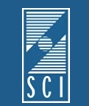 |
|

Radioactivity and the Atomic Nature of Matter
Uri Haber-Schaim
IPS is unique among physical-science textbooks in introducing the atomic nature of matter through radioactivity. There were several reasons why we have chosen this unconventional and non-historical approach. The purpose of this article is to share them with all IPS teachers, in particular with any who might feel somewhat uncomfortable with the entire subject of radioactivity and, therefore, avoid covering the second half of IPS.
The most basic aspect of atomicity is that matter is made up of discrete building blocks; it does not form a continuum. Neither observations in daily life nor the experience of most students in their science labs support this idea. Many textbooks, therefore, appeal to the ancient Greek philosophers, who invented the word "atom," even though the original use of the term has little in common with its meaning today. Others appeal to authority and use the familiar phrase, "Scientists call the smallest part of an element that has all the properties of the element an 'atom.'" Similar statements are made about a molecule's being the smallest part of a compound that has all the (characteristic) properties of the compound. Both statements are manifestly wrong; a simple comparison of properties will show that a single atom has none of the characteristic properties of the bulk element.
What is clearly needed is first to acquaint students with natural processes that display discreteness and then to demonstrate that these processes transform elements. This is exactly what we do in Chapter 7 of IPS.
Radioactive decay occurs in countable steps whose signatures can be both heard (with a Geiger counter) and seen (in a cloud chamber). The tools needed for safe classroom demonstrations of these effects are much more affordable today than they were in earlier years due to advances in technology and computer-interfacing. SCI also offers a videocassette that contains two demonstrations. In addition to the fundamental science, the question of radioactivity and health is being discussed in the text.
In Chapter 8 of IPS we develop a model for radioactive decay, which leads to the testable prediction of the existence of a radioactive half-life. In Chapter 9, building on the two preceding chapters, we use radioactivity to find the mass of individual atoms.
At a time when the media talk of international terrorists seeking to use bombs laced with radioactive materials, it is imperative that a physical science course provide a basic understanding of radioactivity. A check of the indexes of several popular high-school chemistry and physics textbooks shows that radioactivity is not introduced until pages 550 to 600. As any teacher knows, this means that the topic will never be taught.
Thus, for many students, IPS offers the only opportunity for learning
about radioactivity and getting a basic understanding of the atomicity
of matter. If you would like to enhance the effectiveness of your teaching
of these important topics, we recommend that you attend the IPS
workshop for Chapters 6 - 10 in Golden, CO, this summer.